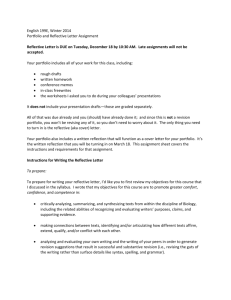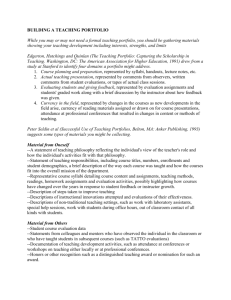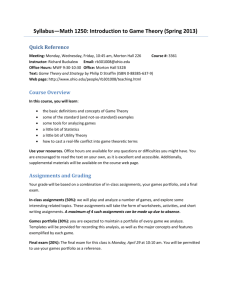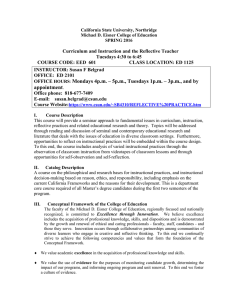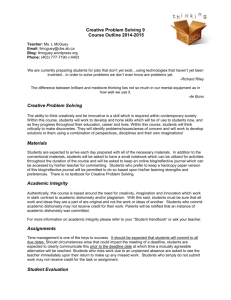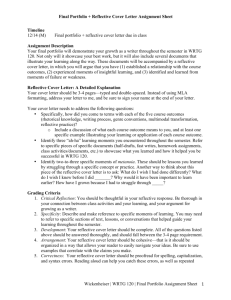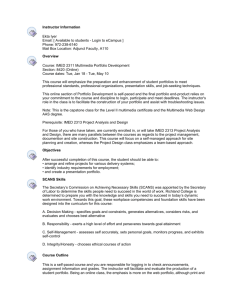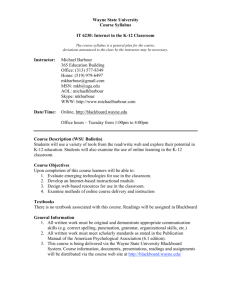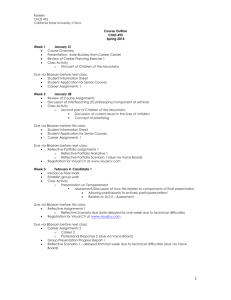Portfolio and Reflective Cover Letter Assignments Your portfolio
advertisement
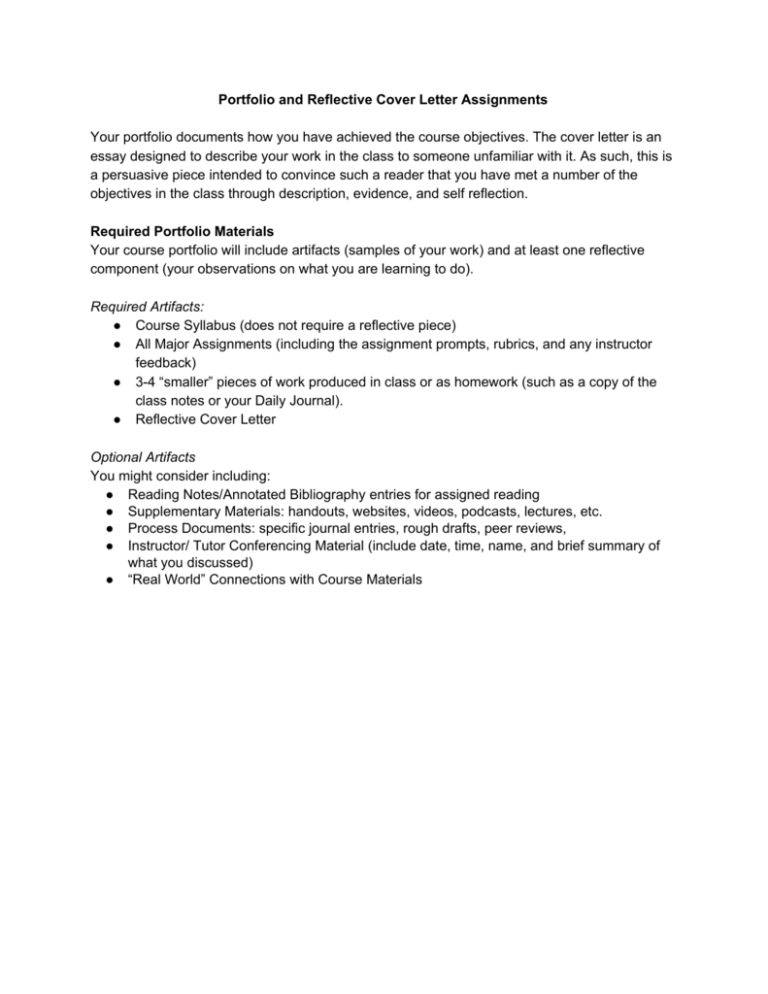
Portfolio and Reflective Cover Letter Assignments Your portfolio documents how you have achieved the course objectives. The cover letter is an essay designed to describe your work in the class to someone unfamiliar with it. As such, this is a persuasive piece intended to convince such a reader that you have met a number of the objectives in the class through description, evidence, and self reflection. Required Portfolio Materials Your course portfolio will include artifacts (samples of your work) and at least one reflective component (your observations on what you are learning to do). Required Artifacts: ● Course Syllabus (does not require a reflective piece) ● All Major Assignments (including the assignment prompts, rubrics, and any instructor feedback) ● 3­4 “smaller” pieces of work produced in class or as homework (such as a copy of the class notes or your Daily Journal). ● Reflective Cover Letter Optional Artifacts You might consider including: ● Reading Notes/Annotated Bibliography entries for assigned reading ● Supplementary Materials: handouts, websites, videos, podcasts, lectures, etc. ● Process Documents: specific journal entries, rough drafts, peer reviews, ● Instructor/ Tutor Conferencing Material (include date, time, name, and brief summary of what you discussed) ● “Real World” Connections with Course Materials Developing Your Reflective Cover Letter (Essay) Persuade, both your instructor and the institution, that your work meets the objectives for this course. Discuss your learning experiences in this course, including any details that are unique to your own learning process. Your Reflective Cover Letter is a source­based writing; consider using hyperlinks to directly link to the artifact/evidence from within your cover letter. Also consider addressing a spectrum of classroom activities as evidence of your learning, such as: in­class writing, blogs, class discussion, emails, essays (including process work, such as drafts, homework, peer reviews, etc.), presentations, and editing. You may use first person , as it is appropriate for this genre. Consider the following questions as a means of generating content in your paper: ● What learning objectives are you still working on? ● How do you plan to continue to address these areas? ● What areas did you feel you were most successful, or improved the most? ● Where do you see this work intersecting with your field or career? ● Have you been able to apply concepts you have learned in the course to what you do at work or in other courses? ● What other observations or comments do you want to make about your portfolio/ course work/learning? Ev aluate yourself using the course objectives from the syllabus and your personal course goals . You may consider using the chronological order of assignments to arrange the paper OR use a number of specific course objectives (and then associating particular assignments with each) as a means of ordering the content. Specifically, you are to demonstrate how well you have achieved the objectives of the course, using your own work as evidence. For each assignment, discuss: ● what you learned, ● where your learning is demonstrated in the course, ● why and how you still need to grow in that area, and ● how, when, where and why you might use this information or skill in the future. Your Paper Should: ● Contain a clear thesis for this overview ● Reference to each major project, considering the above questions ● Reference some smaller assignments ● Connect those assignments to objectives found in the syllabus ● Include at least 3 multimedia components (an image, an audiofile, video, hyperlink, etc). ● Demonstrate style/aesthetic considerations when using multimedia component ● The paper should be 4­5 pages, in the proper format ● Submit the Reflective Cover Letter in your portfolio by ...
